Are you an early spring indoor seed starter? I am not. Not that I wouldn’t like to be, but frankly I just don’t have the patience for the shenanigans I have to go through to do it successfully. I always get leggy, cat chewed, weaklings that seem highly un-worth the fact that I literally have to re-arrange the furniture to make an ideal spot for the whole effort.
But I love (and miss) the excitement of early spring and I hate that my practical decision means that I miss out on some of the more interesting plants available (particularly to us northerners) – those only available to the intrepid indoor seed starter. But this year I have an alternative plan and I am going to grow turmeric, ginger, rosemary and sage indoors.

Ok, so it’s not that exciting to plant herbs like Rosemary and Sage, but given my northern clime, my summer planted herbs never get very substantial – or at least not as substantial as I hope. Rosemary is arguably my favorite herb to cook with and no matter how many plants I buy, they are never big enough to provide the long skewer-like branches that I want for grilling. And I am constantly being cautious to not clip so much that I stunt the plant (I constantly go over the line). So I’ve rescued these plants that were languishing pathetically in my still empty local nursery and I am showering them with all the love and attention I can. I plan to give them a start that (hopefully) will ensure I have full-on shrubs by late July – I see this as the toddler adoption alternative to babying seedlings. 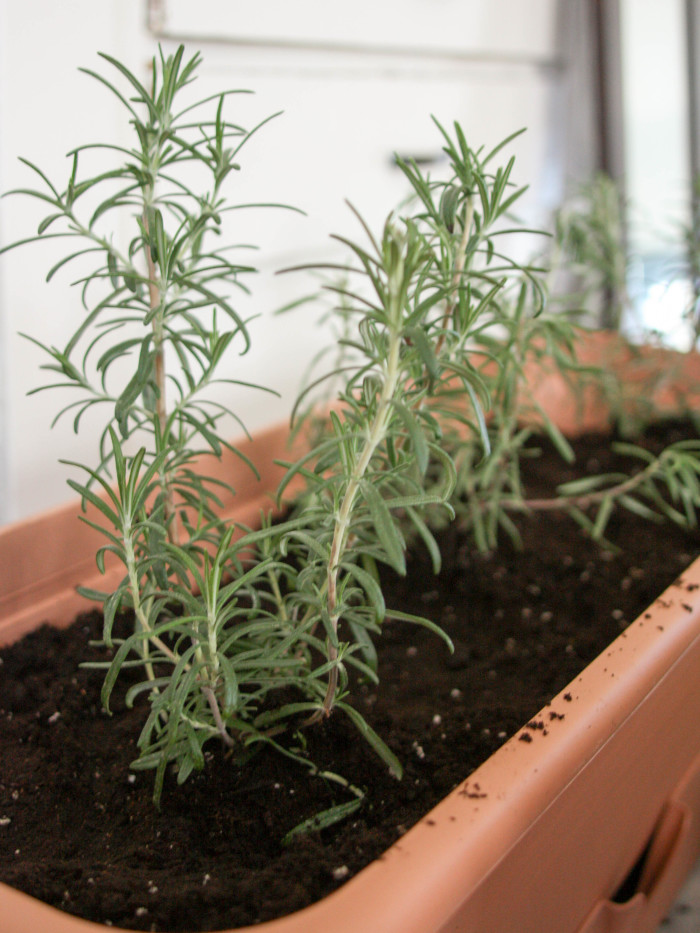
I’m using Garden Well Self-Watering Planters to make this all a bit easier. Each box (which is about the size of an average window box) has a base that you can fill with water and a wicking mat that will keep the soil in the container steadily moist. You water from the bottom and it can store enough to keep plants moist for a week.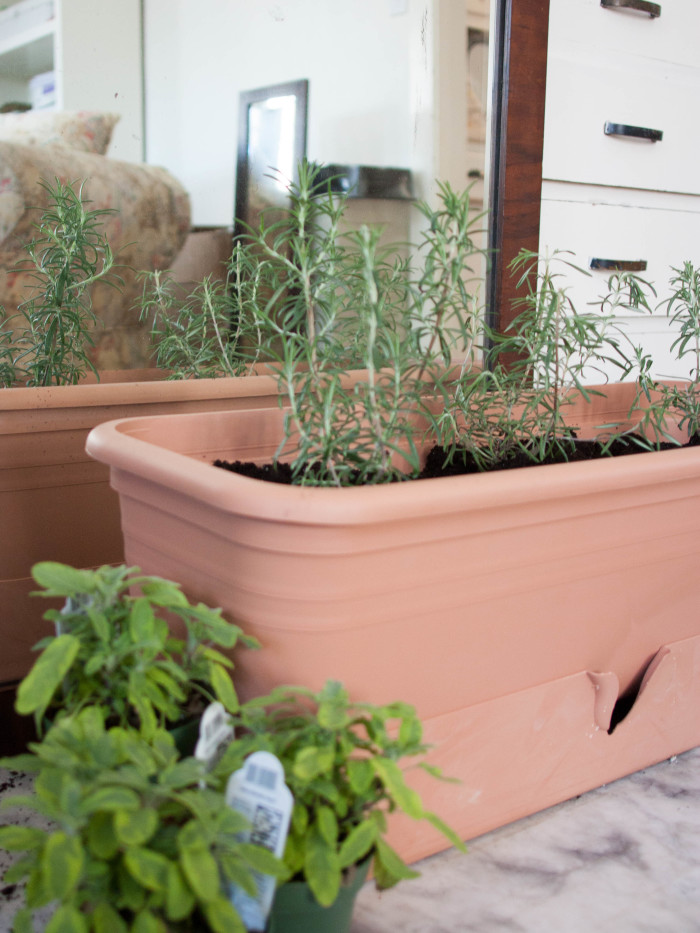 I’m also experimenting with growing Turmeric and Ginger. I’m trying two varieties of turmeric – one I bought in the grocery store and other was a gift from Kenny at Veggie Gardening Tips. The two are quite different and I am very curious to see how each performs. The grocery store variety is colored deep orange – as you might expect if you are familiar with turmeric. The other is nearly white – looking almost like ginger – and is a variety called White Mango, it was originally sourced here – but was grown on by Kenny and passed along to me.
I’m also experimenting with growing Turmeric and Ginger. I’m trying two varieties of turmeric – one I bought in the grocery store and other was a gift from Kenny at Veggie Gardening Tips. The two are quite different and I am very curious to see how each performs. The grocery store variety is colored deep orange – as you might expect if you are familiar with turmeric. The other is nearly white – looking almost like ginger – and is a variety called White Mango, it was originally sourced here – but was grown on by Kenny and passed along to me.
He also gave me a stick (is that what you call it?) of Bubba Baba ginger that I also planted. (If you want to know more about growing these plants – here are the instructions…not hard…Kenny promises it is actually quite easy – provided the plants get adequate water – which is not something I am particularly fantastic with – but I’m thinking these containers will have my back).
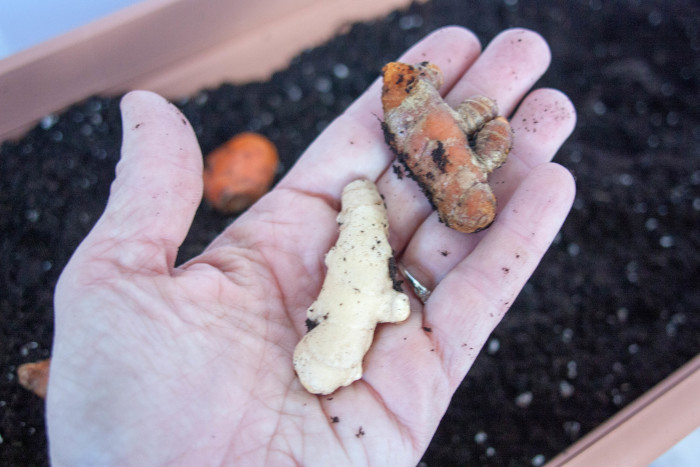
I am excited to learn to cook with these plants later in the summer and I plan to experiment with not only the root but the leaves and flowers too. If all goes well, I might even transplant some of them into the garden as the lush leaves are also fairly ornamental. 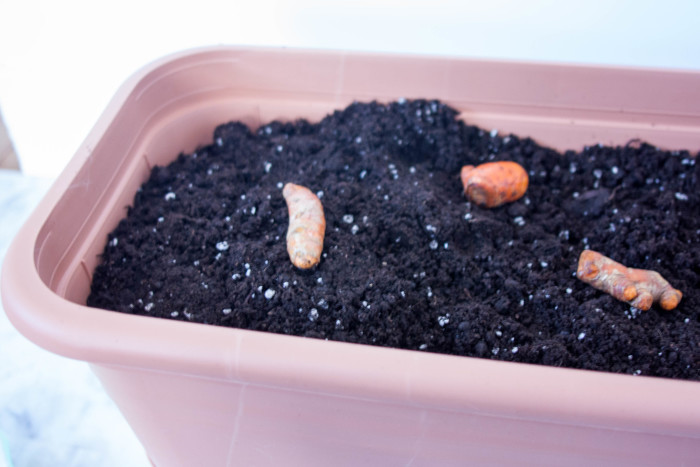
The best part about this version of ‘seed ‘ starting is that everything is a bit more substantial. These containers are not enticing to the cat – there is no water or flimsy crinkling plastic within reach of his playful paws, the sides are tall enough that he doesn’t seem to see it as place to lay and I can easily set them in front of the heating duct to provide the warmth that they prefer (without fear of the warm air cooking them).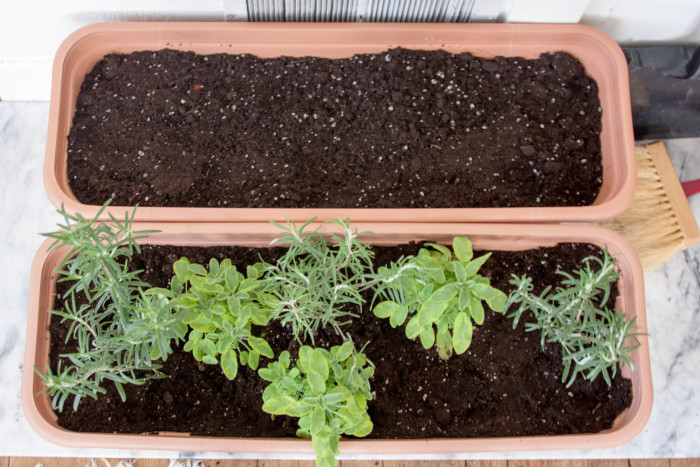
Wish me luck!
p.s. Here is a before shot – that sage won’t stay – it will go into the ground just as soon as it is warm enough leaving froom for my rosemary bushes. I’m looking forward to the ‘after’ in a few months!
Disclaimer: This post is sponsored by Berry Plastics – Maker of the Garden Well planter.
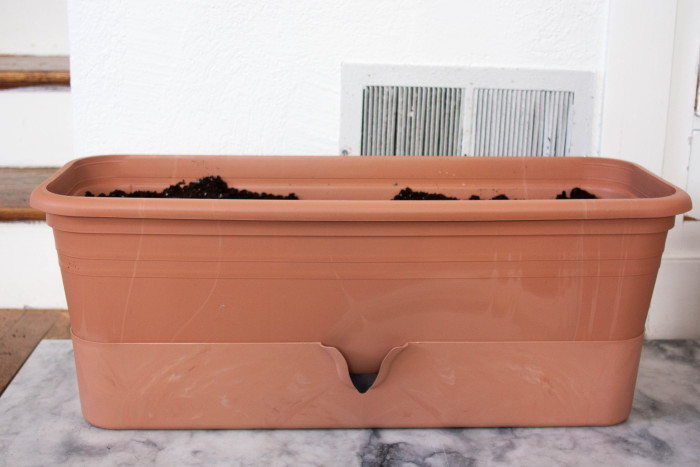
Looks like you’re off to a good start Rochelle. Shared your post with our followers. 🙂
thanks Kevin!
Cool self watering box, do you know what the mats on bottom are made of?
They appear to made of a felt like fabric (it folds up nicely — you unfold it, wet it, and lay it in the base over various bumps that ensure it comes into contact with both water and soil.
Rochelle,
It’s so timely that you just posted this as I have decided to ‘upgrade’ my Rosemary collection, placing a rather large order to see what the various varieties look like ( grown here in our same Northern ‘clime’). I just saw the orange turmeric too at our local Market Basket supermarket – and I thought about trying it – I’ve grown the plants before, but never tried it from the rhizome. Curious to see how it will work. Of course, I have no idea how to use it fresh!
Matt – Kenny tells me (and so does the place in hawaii where he got his original organic turmeric) that the grocery store variety is very suseptable to various fungus — but I’m giving it a go anyway. Will see for myself.
Great article!
Got to say, I love growing rosemary and sage! Might give growing turmeric and ginger a go too!
Thanks for sharing!
Dear all and in particular to those of you who are interested in or curious on how to use turmeric. I come from that part of Asia where it is eaten every day and in nearly all dishes. Generally dried and sold in open markets which is then ground into paste (fresh everyday) and used for cooking. Besides this the raw one is ground into fine paste and eaten either with fresh milk or yoghurt. This raw paste is also used to remove or cure skin blemishes Brides all over the sub-continent apply this well in advance of ther wedding date to enhance their skin tone and to condition the skin.
The medicinal value of this rhizome is endless. Beginning with blood cleansing, skin toning, detoxing internal organs, specifically the liver. The dried powder in capsules is administered to treat hepaptitis B. It also prevents and arrests neurological conditions, and cancer.
Of course you can browse the web for its medicinal values as well as usage in food.